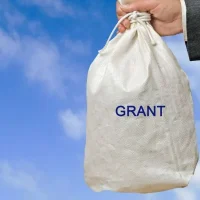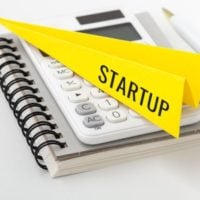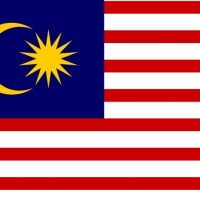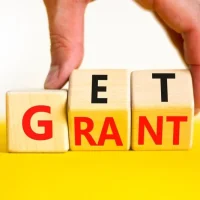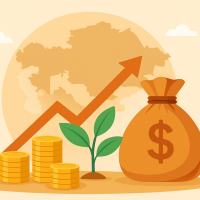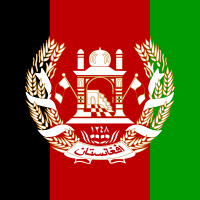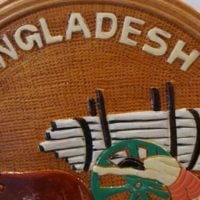In the ever-evolving landscape of nonprofit organizations, the importance of effective donor management cannot be overstated. Customer Relationship Management (CRM) tools have emerged as essential resources for NGOs seeking to streamline their operations, enhance donor engagement, and ultimately drive fundraising success. These digital platforms allow organizations to collect, analyze, and manage donor data efficiently, enabling them to build stronger relationships with their supporters.
As the competition for funding intensifies, NGOs must leverage technology to not only survive but thrive in their missions. The adoption of CRM tools can transform how NGOs operate by providing a centralized database for all donor interactions. This means that every communication, donation history, and engagement activity is recorded in one place, making it easier for organizations to track their relationships with donors.
Furthermore, CRM systems can automate various tasks, such as sending thank-you emails or reminders for upcoming events, freeing up valuable time for staff to focus on strategic initiatives. As we delve deeper into the world of CRM tools for NGOs, it becomes clear that these systems are not just a luxury; they are a necessity for organizations aiming to maximize their impact.
Key Features to Look for in CRM Tools for NGOs
Donor Management Capabilities
A robust CRM should allow NGOs to track donor information, including contact details, donation history, and engagement levels. This information is vital for personalizing communication and ensuring that donors feel valued and appreciated. Additionally, segmentation features enable organizations to categorize donors based on various criteria, such as donation frequency or event participation, allowing for targeted outreach efforts.
Reporting and Analytics Functionality
A good CRM should provide insights into donor behavior and trends, helping NGOs make data-driven decisions. For instance, organizations can analyze which campaigns yield the highest return on investment or identify potential major donors based on their giving patterns.
Integration Capabilities
Furthermore, integration capabilities with other tools—such as email marketing platforms or accounting software—are critical for creating a seamless workflow. By ensuring that the chosen CRM can integrate with existing systems, NGOs can avoid data silos and enhance overall efficiency.
Top CRM Tools for Managing NGO Donor Data
Several CRM tools have gained popularity among NGOs due to their tailored features and user-friendly interfaces. One standout option is Salesforce for Nonprofits, which offers a comprehensive suite of tools designed specifically for the nonprofit sector. With its customizable dashboards and extensive reporting capabilities, Salesforce allows organizations to track donor interactions and measure campaign effectiveness effectively.
Additionally, its robust community support and resources make it an attractive choice for NGOs looking to maximize their fundraising efforts. Another noteworthy CRM is Bloomerang, which focuses on donor retention and engagement. Its user-friendly interface simplifies the process of tracking donor data and provides actionable insights into donor behavior.
Bloomerang’s unique feature is its “donor retention score,” which helps organizations understand how well they are retaining their supporters over time. This focus on retention is crucial for NGOs aiming to build long-term relationships with their donors rather than relying solely on one-time contributions.
Comparison of CRM Tools for NGOs
When comparing CRM tools for NGOs, it is essential to consider factors such as pricing, scalability, and customer support. For instance, while Salesforce offers a robust set of features, its pricing structure can be complex and may not be suitable for smaller organizations with limited budgets. On the other hand, tools like DonorPerfect provide a more straightforward pricing model that can be more accessible for smaller NGOs while still offering essential features like donor management and reporting.
Scalability is another critical factor to consider when choosing a CRM tool. As an NGO grows, its needs will evolve, and the chosen CRM should be able to accommodate this growth without requiring a complete overhaul of the system. For example, HubSpot offers a free version of its CRM that can be upgraded as an organization expands its operations.
This flexibility allows NGOs to start with basic features and gradually incorporate more advanced functionalities as their needs change.
Case Studies: How NGOs are Using CRM Tools to Manage Donor Data
To illustrate the impact of CRM tools on NGO operations, consider the case of a small environmental organization that adopted Bloomerang to manage its donor data. Before implementing the CRM, the organization struggled with tracking donations and maintaining relationships with supporters. After integrating Bloomerang into their operations, they were able to segment their donor base effectively and tailor their communication strategies accordingly.
As a result, they saw a 30% increase in donor retention within the first year of using the tool. Another compelling example comes from a large international NGO that utilized Salesforce for Nonprofits to streamline its fundraising efforts across multiple regions. By centralizing donor data in Salesforce, the organization was able to create targeted campaigns based on regional interests and giving patterns.
This approach not only improved engagement but also led to a significant increase in overall donations—by 40% in just two years. These case studies highlight how effective CRM tools can transform donor management practices and drive fundraising success.
Tips for Implementing and Using CRM Tools for NGOs
Successfully implementing a CRM tool requires careful planning and execution. First and foremost, it is essential to involve all relevant stakeholders in the decision-making process. This includes staff members who will be using the system daily as well as board members who may have insights into organizational needs.
By gathering input from various perspectives, NGOs can select a CRM that meets their unique requirements. Once a CRM tool has been chosen, training is crucial for ensuring that staff members feel comfortable using the system. Many CRM providers offer training resources or onboarding sessions that can help organizations get up to speed quickly.
Additionally, establishing clear protocols for data entry and management will help maintain data integrity over time. Regularly reviewing and updating donor information ensures that organizations have accurate records to inform their fundraising strategies. In conclusion, CRM tools are invaluable assets for NGOs looking to enhance their donor management practices.
By understanding key features to look for, exploring top options available in the market, and learning from successful case studies, organizations can make informed decisions about which tools best suit their needs. With careful implementation and ongoing training, NGOs can leverage these powerful systems to build stronger relationships with donors and ultimately achieve greater impact in their missions.

